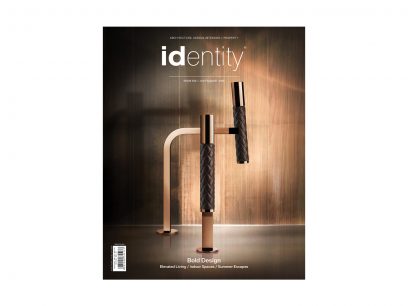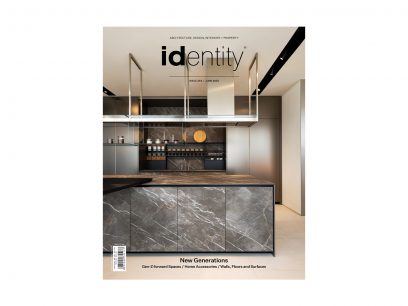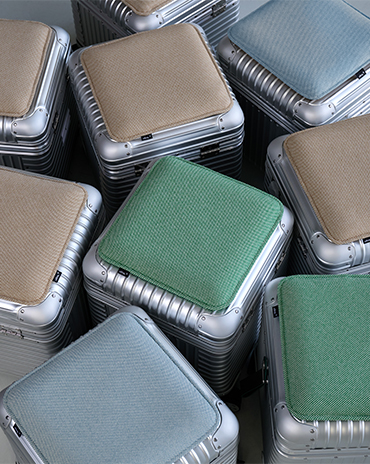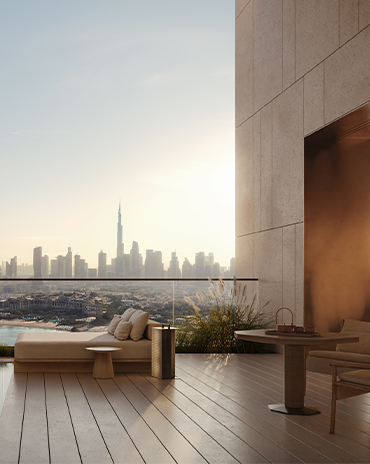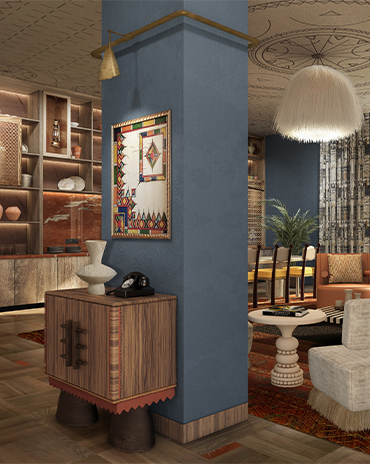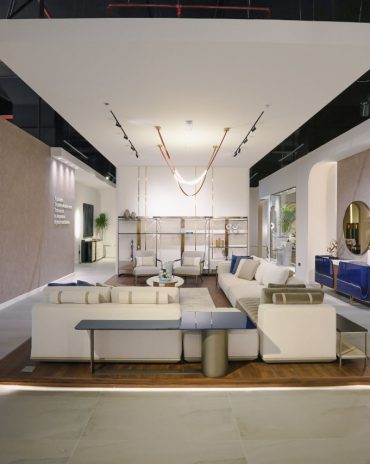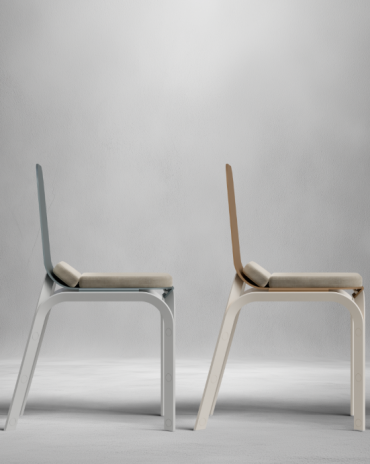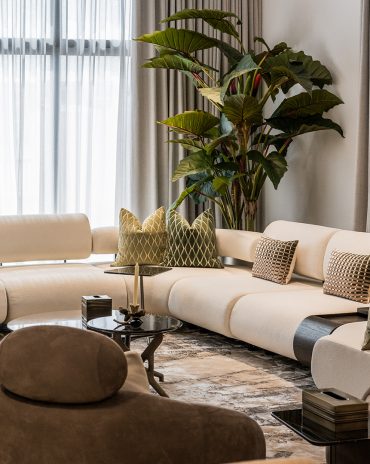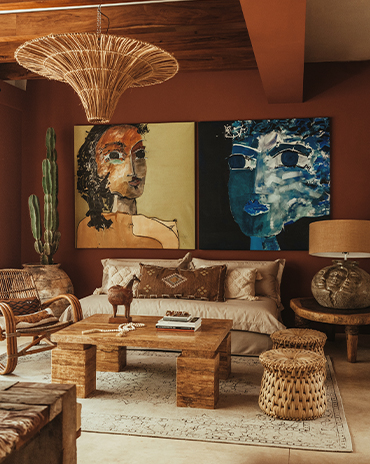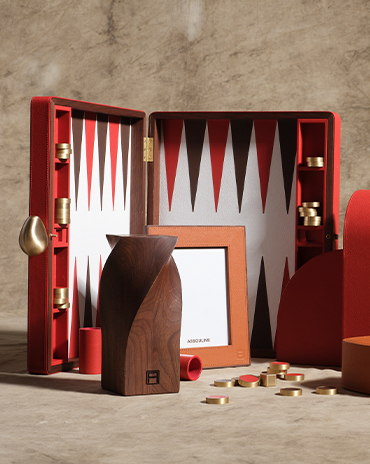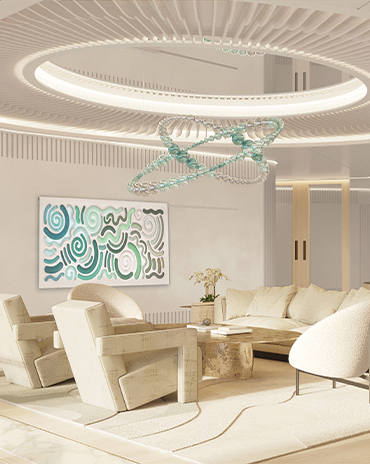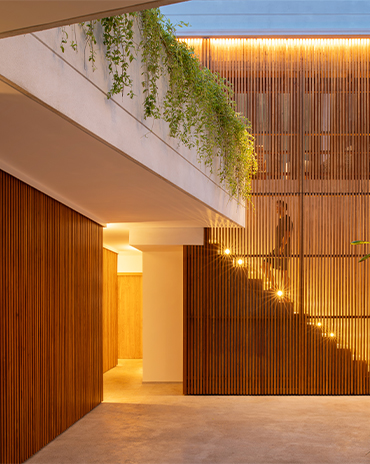Copyright © 2025 Motivate Media Group. All rights reserved.
A Surreal Tribute
“Water, salt and olive oil. That’s what it takes to survive,” says designer Philippe Starck, who created the new La Almazara olive oil museum outside Ronda, Spain
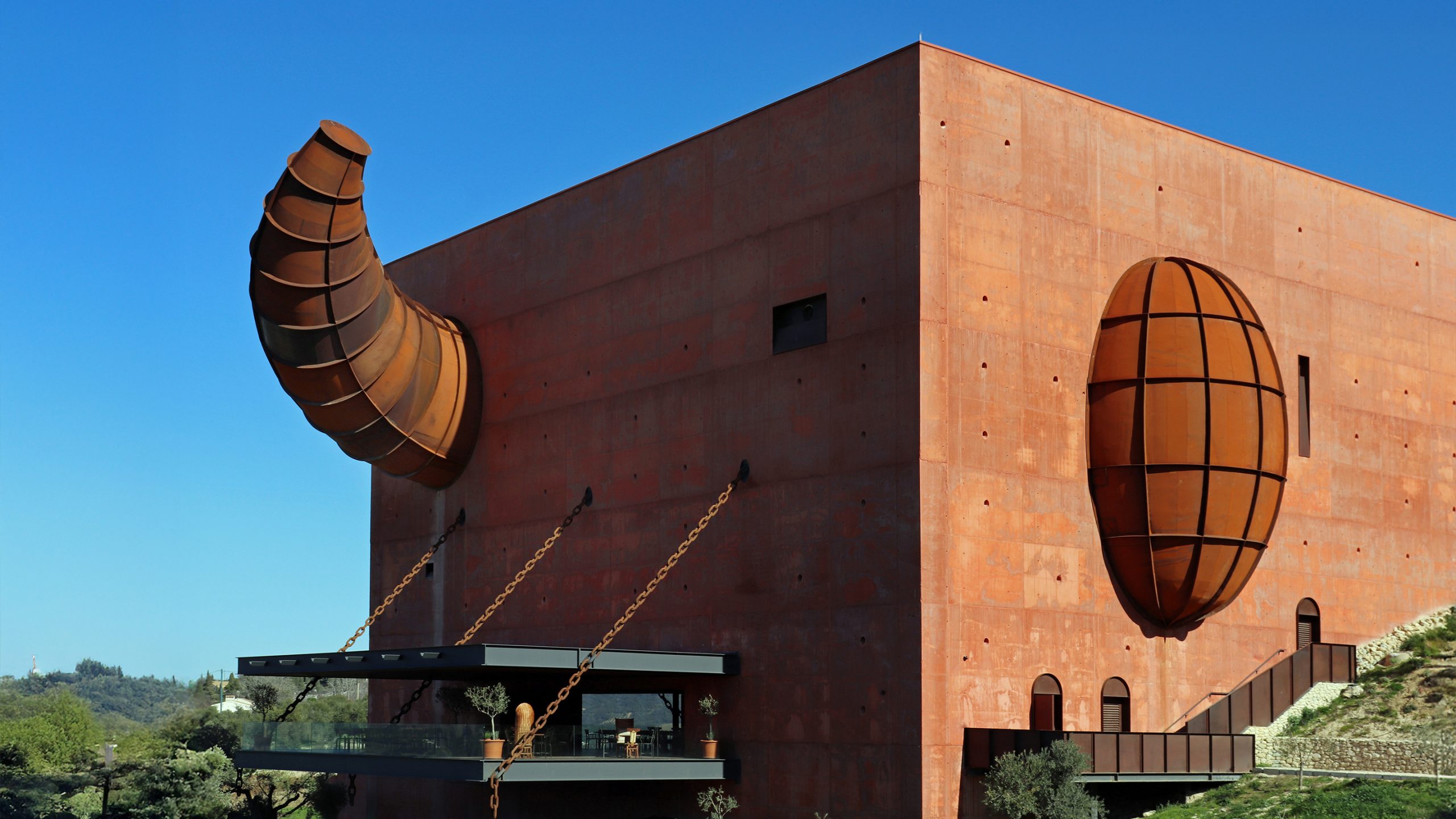
In the heart of Andalusia’s rolling olive groves, a striking red cube rises like a surrealist monolith from the earth. This is La Almazara, a bold fusion of art, architecture and agrarian reverence. It is also the latest creation of French designer Philippe Starck, and an homage to one of the Mediterranean’s most sacred gifts: olive oil.
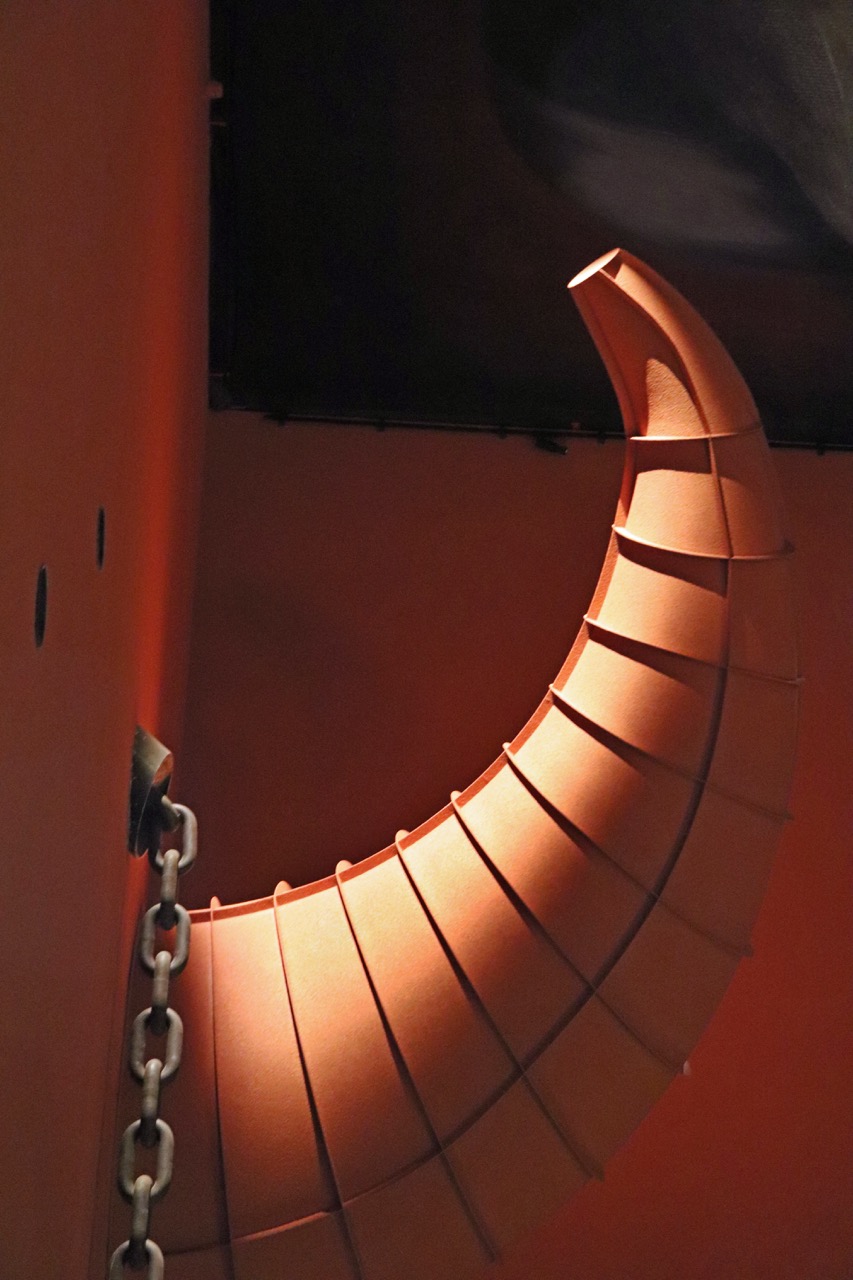
Clad in weathered corten steel, the building is as symbolic as it is sculptural. A giant horn and an enormous olive pierce its angular façade, hinting at the mythic relationship between nature and culture. Just below, a suspended terrace juts out like a mouth; part animal, part machine and part myth, it offers panoramic views of the grove. Starck describes it as “a big slap in the face that awakens, shakes, revives, stirs and celebrates the olive and its oil.”

The influences for La Almazara include Picasso and Spanish surrealism
But La Almazara is far more than just a museum. It’s a living, breathing olive oil estate, where the extra virgin oil produced under LA Organic’s sustainable ethos is the liquid thread that ties together history, heritage and high design. Here, ten kilos of hand-harvested olives are needed to produce a single litre of oil – each drop distilled with reverence and precision.
The seed of La Almazara was planted far from Andalusia, in the storied vineyards of Rioja. In 2010, two Andalusian entrepreneurs toured the celebrated architectural wineries of northern Spain, where buildings by Frank Gehry, Norman Foster and Santiago Calatrava had transformed wine tourism. Inspired, they envisioned a similar confluence of design and tradition – this time, focused on olive oil.
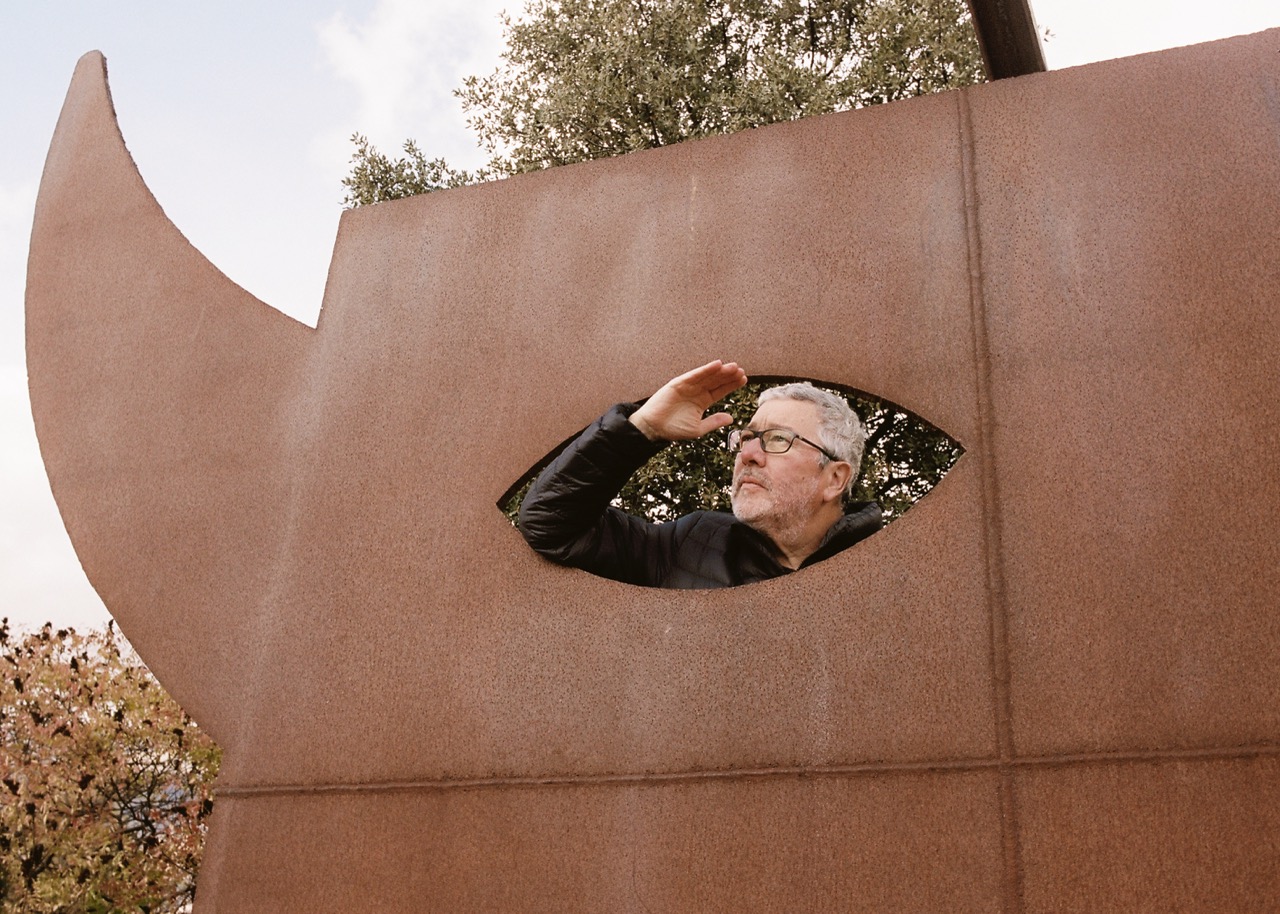
By 2014, La Almazara was born, and the team invited Starck to bring the vision to life. His response was immediate: “Olive oil is something sacred to me. When they made the proposal to me, I said yes straight away.”
Inside, La Almazara is a sanctuary of subdued light and rich storytelling. Starck, who gravitates toward darkness, has bathed the interior in shadow to heighten sensory immersion. Visitors move through dimly lit spaces lined with films, texts and artifacts chronicling the olive’s profound role in Spanish civilisation – Spain, after all, produces 45% of the world’s olive oil. Art and history collide in a cavernous central hall, where a massive Goya painting of legendary bullfighter Pedro Romero hangs near a portrait of 9th-century polymath Abbas ibn Firnás – the Andalusian who attempted flight centuries before da Vinci. Overhead, a ceiling mural by Ara Starck, Philippe’s daughter, swirls with symbols: bulls, olives, wings and echoes of Ronda’s rich cultural soul.

There is a giant painting on the ceiling created by Ara Starck, filled with symbols of bullfighting, olive oil, and other things associated with the city of Ronda
The building itself is polyhedral, cubist and unmistakably Spanish in its avant-garde ambition. Picasso’s geometric playfulness whispers through its angles, while the surrealism of Dalí seems to hover in the shadows.
While the art and exhibits are now open to the public, the terrace restaurant is still in gestation. When complete, it will serve inventive tapas and small plates paired with regional wines from Ronda. The terrace itself forms a dramatic platform suspended by oil tanker chains, framing Sierra de Grazalema like a living canvas. The site also features a small auditorium, a tasting room for LA Organic oils, and a boutique where guests can take home a piece of the grove.
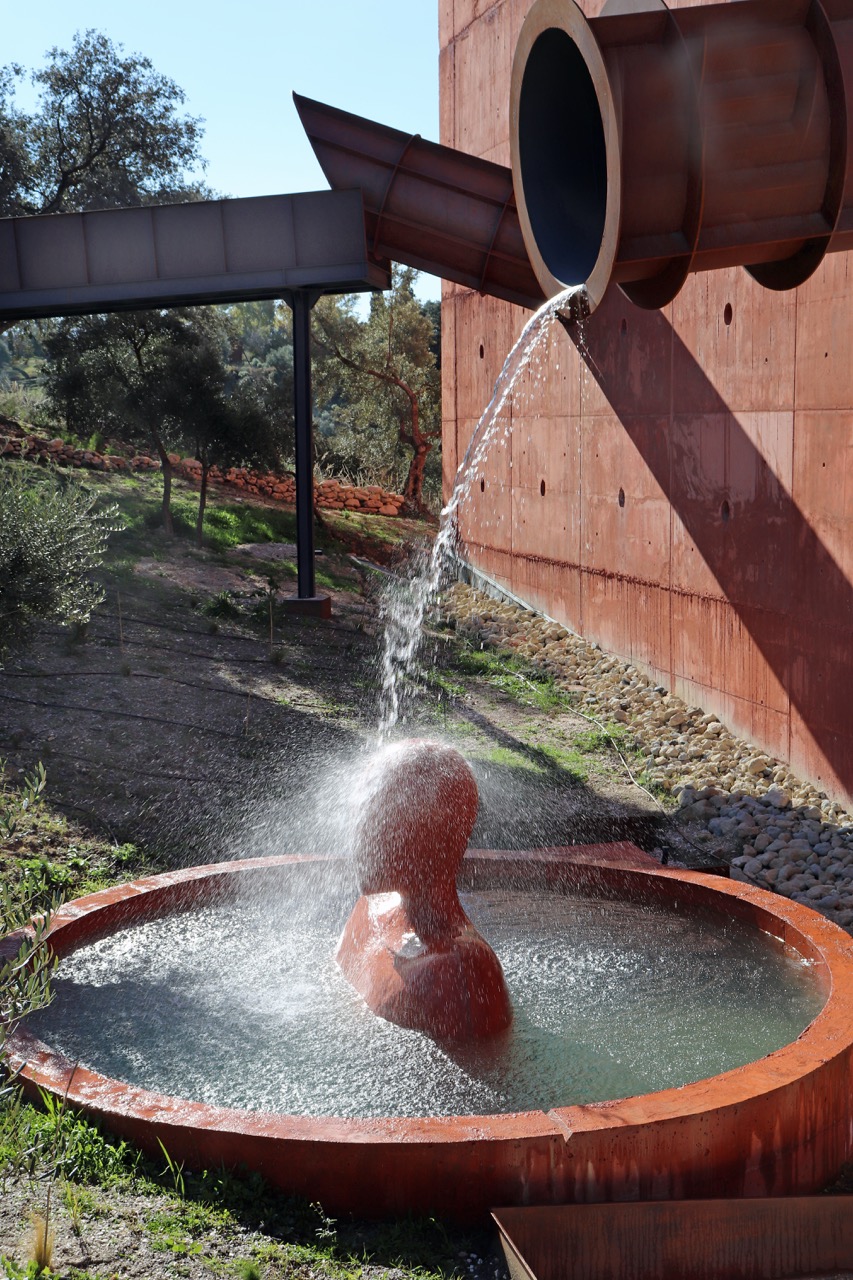
For Starck, who now resides on a Portuguese farm surrounded by olive trees and oaks, La Almazara is a deeply personal project. It embodies his lifelong pursuit of democratic design – of creating beauty and meaning accessible to all, not just the elite.
“La Almazara is a tribute to this respect for olive oil, a reverence born from all the civilisations that have preceded us,” he says. And in a world hurtling toward the hyper-digital, this olive-red cube stands as a quietly radical gesture: a return to roots, both literal and figurative.
Read more features here.
Photography by Carin Tegner and Alfonso Quiroga
The Latest
Designing Movement
RIMOWA’s signature grooved aluminium meets Vitra’s refined design sensibilities
A Sense of Sanctuary
We interview Tanuj Goenka, Director of Kerry Hill Architects (KHA) on the development of the latest Aman Residences in Dubai
Elevated Design
In the heart of Saudi Arabia’s Aseer region, DLR Group has redefined hospitality through bold architecture, regional resonance and a contemporary lens on culture at Hilton The Point
Turkish furniture house BYKEPI opens its first flagship in Dubai
Located in the Art of Living, the new BYKEPI store adds to the brand's international expansion.
Yla launches Audace – where metal transforms into sculptural elegance
The UAE-based luxury furniture atelier reimagines the role of metal in interior design through its inaugural collection.
Step inside Al Huzaifa Design Studio’s latest project
The studio has announced the completion of a bespoke holiday villa project in Fujairah.
Soulful Sanctuary
We take you inside a British design duo’s Tulum vacation home
A Sculptural Ode to the Sea
Designed by Killa Design, this bold architectural statement captures the spirit of superyachts and sustainability, and the evolution of Dubai’s coastline
Elevate Your Reading Space
Assouline’s new objects and home fragrances collection are an ideal complement to your reading rituals
All Aboard
What it will be like aboard the world’s largest residential yacht, the ULYSSIA?
Inside The Charleston
A tribute to Galle Fort’s complex heritage, The Charleston blends Art Deco elegance with Sri Lankan artistry and Bawa-infused modernism
Design Take: Buddha Bar
We unveil the story behind the iconic design of the much-loved Buddha Bar in Grosvenor House.


